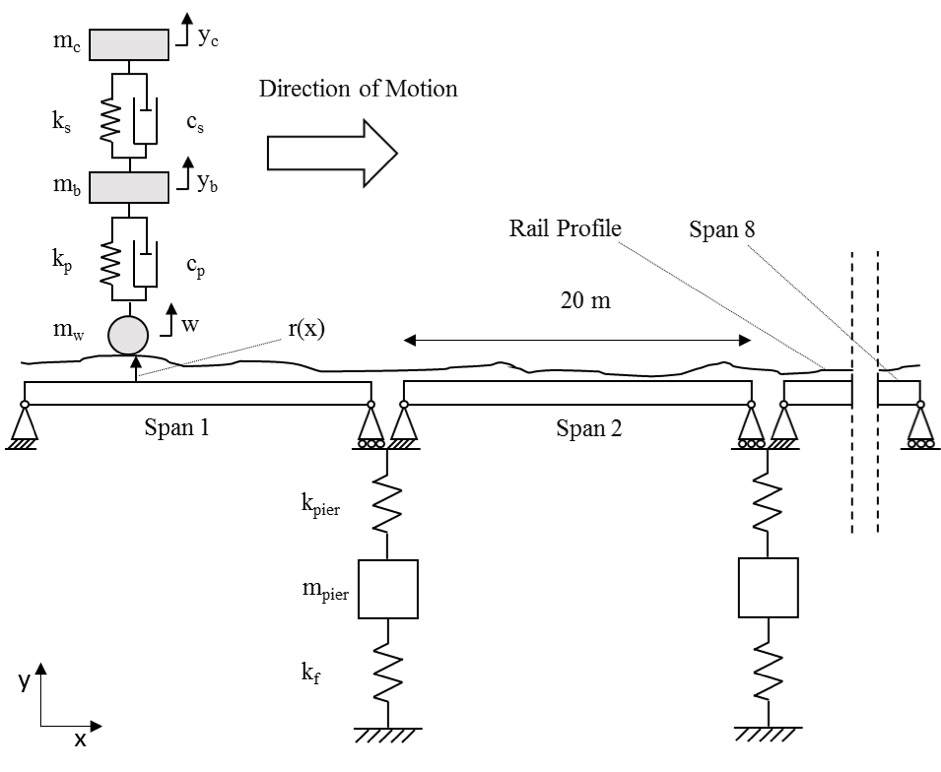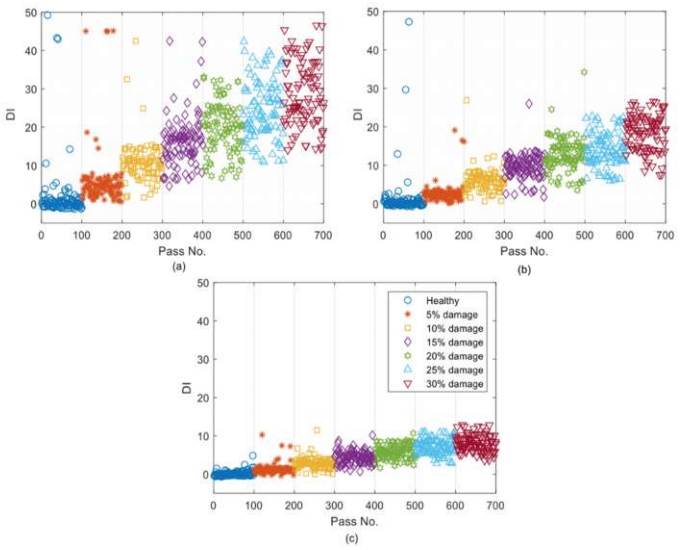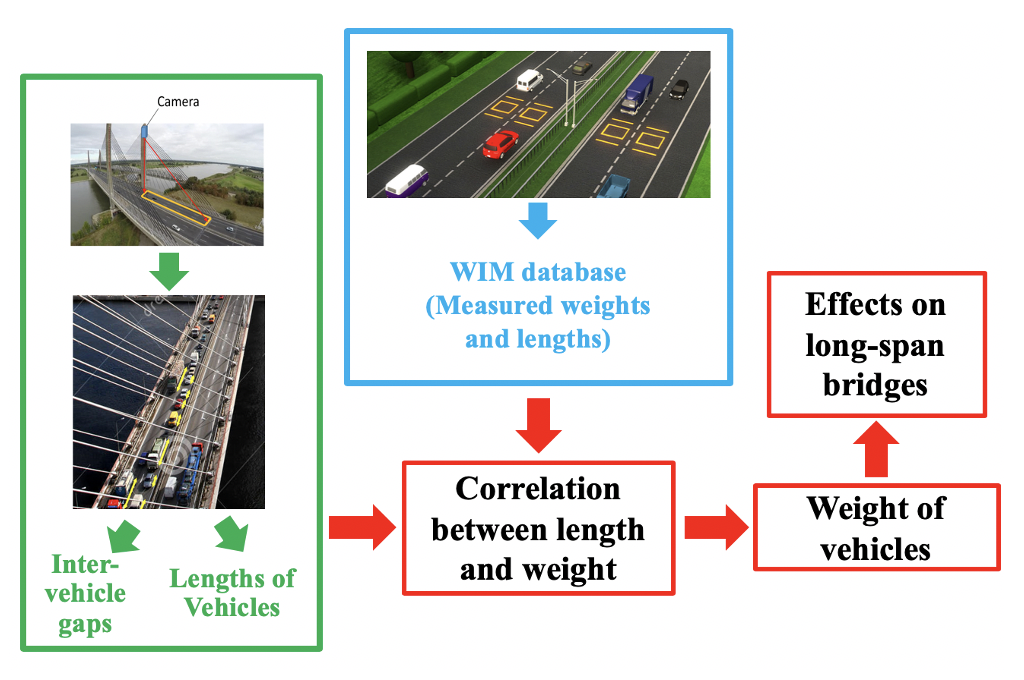Drive-by monitoring of bridges
We are currently developing a robust and low-cost approach called “indirect” or “drive- by” for monitoring of bridges in motorway and railway networks. The idea is to use an instrumented vehicle (a truck or train) which travels through the system and monitors roads and highway bridges and railway bridges. This approach shows many advantages compared to direct methods (where the sensors are installed on the structure) in terms of equipment needed, specialist personnel on site, economy, simplicity, efficiency and mobility.

P. Fitzgerald, A. Malekjafarian, D. Cantero, E.J. OBrien, L.J. Prendergast, 2019 “Drive-by scour monitoring of railway bridges using a wavelet-based approach.” Engineering Structures, Volume 191, Pages 1-11, DOI: 10.1016/j.engstruct.2019.04.046.
Drive-by Monitoring of Railway tracks

A. Malekjafarian, E. OBrien, P. Quirke, C. Bowe, 2019, “Railway track monitoring using train measurements: an experimental case study”, Applied Science, Volume 9, DOI: 10.3390/app9224859.
Machine learning for bridge condition monitoring
In recent years, there has been an increasing interest in the use of machine learning algorithms for bridge-structural-health monitoring using direct measurements. The algorithms have been employed to extract structural abnormalities from the measured data. We are working on machine learning-based methods for drive-by bridge health monitoring.

Traffic load estimation for bridges

E.A. Micu, A. Malekjafarian, E.J. OBrien, M. Quilligan, R. McKinstray, E. Angus, M. Lydon, N. Catbas, 2019, “Evaluation of the extreme traffic load effects on the Forth Road Bridge using image analysis of traffic data”, Advances in Engineering Software, Volume 137, DOI: 10.1016/j.advengsoft.2019.102711.
